3rd Position Blues Harp – An Introduction
Anon they move, In perfect phalanx to the Dorian mode, Of flutes and recorders. Paradise Lost (Milton)
When we first pick up a diatonic harp, we’re on a mission from God. Nothing, but nothing’s going to get in our way. In short order we buy some cheap shades and a big old hat, then we embark on a crusade to capture that sound. You know the one. It fits in your pocket and goes da DAH da da.
We raid the wardrobe, car glove compartment and every drawer for loose change, and then plunder the sofa. Then we invest our accumulated swag in a used copy of Play Like Walter in Ten Minutes, while bidding on ebay for a second hand entry level harp with a fancy name like Sonny Boy’s Special or Blues Howler.
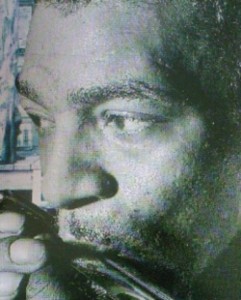 [Fast forward one week..] Tearing open our package, we skip When The Saints, Amazing Grace and Camptown Races and zero in on part two; Blues Cross Harp. Three spins of the included compact disc digital audio, a few minutes in front of YouTube and a sip of JD later, our two hole bend is nailed. We tilt our shades and push back the hat. Job done. We are officially a ber-looz brother… or sister. Michael done rowed our boat ashore.
[Fast forward one week..] Tearing open our package, we skip When The Saints, Amazing Grace and Camptown Races and zero in on part two; Blues Cross Harp. Three spins of the included compact disc digital audio, a few minutes in front of YouTube and a sip of JD later, our two hole bend is nailed. We tilt our shades and push back the hat. Job done. We are officially a ber-looz brother… or sister. Michael done rowed our boat ashore.
And now we’re thinking The band, the band! Time to surf eBay for a Bassman amp, a bullet mic and more cheap harps in different keys. Meanwhile we’re pilfering licks and watching all the 5 minute ‘how to’ harp videos we can, when we come across a Little Walter track called Thunderbird and we can’t work it all out.
On another track, a dude starts blowing chromatic for heaven’s sake. And Sugar Blue’s version of Help Me sounds way more more complex than Sonny Boy II’s original. In fact we’ve never heard harp like it. William Clarke, Charlie Musselwhite, Gary Primich and George Harmonica Smith… They’re all at it! What’s going on? Third position, that’s what.
3rd position in a nutshell
So here’s everything you need to know about 3rd position in three paragraphs. Every good blues harp player should be able to play blues in 3rd position. Occasionally it’s called double-cross or slant harp. But not often. Occasionally you’ll hear mention of the Dorian Mode and Circle of Fifths; add these to your to do list, but don’t let them distract you just yet. While 2nd position playing starts and ends in draw two, 3rd starts and ends in draw four. Normally. You could start and end an octave lower or higher, and this is important, but it’s going to overload you at the moment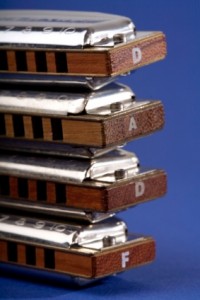 . Add this to your to do list also. Finally, leave draw three and seven alone for now.
. Add this to your to do list also. Finally, leave draw three and seven alone for now.
While 2nd position blues harp is built on the major blues scale, 3rd position blues harp is built on the minor blues scale. A major scale generally sounds upbeat. A minor scale generally sounds sad. Any blues scale has aspects of both and a skilled player can apply second position to a minor blues, or third position to a major blues. Confused? Don’t be. You’ve only just started, so give yourself a break. The more you investigate things, the more apparent all this will become.
But here’s a comforting piece of trivia to help you fast track things; the IV chord in 3rd position (the one you move to in bars 5, 6 and 10 of a twelve bar blues) corresponds to cross harp from draw hole two, so you can slip in some familiar 2nd position licks – as long as you remember to flatten draw hole three to keep things sounding minor.
Learn to recognise the signature sound of third position by ear. And know that 3rd position sounds great in some situations, but really wrong in others. Use it wisely. 3rd position nearly always fits a Funk, Latin, Jazz or Reggae groove. Blow hole five has a bebop jazzy feel. Draw bend six is the bluesiest of notes. And don’t stress if 3rd position feels weird when you start out. Avoid the temptation to run back into the welcoming arms of cross harp, holes two to six. Stay with the plan. Once you get the hang of 3rd position, it’s C.O.O.L. Enjoy the journey.
How do I get into this stuff?
Not every note on the diatonic harp sounds right in 3rd position, so you need to learn the safe ones first. We’ve already mentioned steering clear of holes three and seven draw. Conveniently enough, the melodies to Scarborough Fair played upward from draw four and Drunken Sailor from draw six will map this out nicely for you. This is your blueprint for the basic 3rd position pattern in the higher octave. Here are the tabs and sound files. Both clips are played on a C major diatonic.
Scarborough Fair
4D 4D..6D 6D..5B 5D..5B 4D
6D..7B..8D 7B..6D 7D..6B..6D
8D..8D 4D..5D 6B..6D 6B..5D 5B..4B [or 8D..7B 6D..6D]
4D 6D..6B 5D..5B..4D..4B..4D
Drunken Sailor
6D 6D..6D..6D 6D..6D..6D
4D 5D 6D
6B 6B..6B..6B 6B..6B..6B
4B 5B 6B
6D 6B..6D 6B..6D 7D 7B 8D
7B 6D 6B..5B 4D 4D
Once you are confident with theses tunes, challenge yourself. Try to find the same sequences in the lower octave. 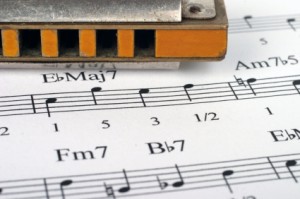 Remember draw one becomes the root note. It will seem scary or awkward at first but it can be done. OK so it involves some serious bend control and discomfort, but feel the pain and get used to it. It will pay you massive dividends in the future. Are you hearing the comfort of 2d position cross harp calling your name? Stay in the zone and resist it. Try working out the melody to Greensleeves instead or even the riff to Deep Purple’s Smoke On The Water. You’ll need a couple of extra bends, but stay in the zone.
Remember draw one becomes the root note. It will seem scary or awkward at first but it can be done. OK so it involves some serious bend control and discomfort, but feel the pain and get used to it. It will pay you massive dividends in the future. Are you hearing the comfort of 2d position cross harp calling your name? Stay in the zone and resist it. Try working out the melody to Greensleeves instead or even the riff to Deep Purple’s Smoke On The Water. You’ll need a couple of extra bends, but stay in the zone.
So where did the blues get to?
Don’t panic, it’s all here. First learn the blues scale upward from draw four. Try this experiment. Pull out your A major harp and play the second position blues scale from draw two. It goes like this.
2D 3D’ 4B 4D’ 4D 5D 6B
6B 5D 4D 4D’ 4B 3D’ 2D
Now pull out your D major harp and do the same in third position from draw four. Like this.
4D 5D 6B 6D’ 6D 7B 8D
8D 7B 6D 6D’ 6B 5D 4D
To complete the range, play the same blues scale on the D harp from draw one, like this:
1D 2D” 2D 3D”‘ 3D” 4B 4D
4D 4B 3D” 3D”‘ 2D 2D” 1D
Now practice working up from draw one and down again from draw eight. Rehearse it until you have memorised the whole sequence and can get it fluent. You are doing some important foundation work and not too many intermediate harp players can do what you’re doing. So well done!
Wide-mouth frog harping
Next, and very importantly, understand that you can introduce some wonderful octave effects in 3rd position diatonic using five hole splits: 3D-7D,4D-8D, 5D-9D, 6D-10D. (For a fuller explanation, you may like to visit our Octaving page under the Harp skills menu above). Why is this so important? Partly because it’s a great sound. Partly because many players focus on the four hole octaves and intervals in cross harp, and remain oblivious to the bigger picture. But probably because these five hole splits are the transferable technique that opens up blues harping on a chromatic harmonica. More of which another time. For now, if you have a Chromatic Harmonica try the five hole splits on both types of harp. Welcome to wide-mouth frog harping!
On a C major diatonic C harp it sounds like this:
3D-7D 4D-8D 5D-9D 5D-10D
On a C major chromatic harmonica it sounds like this:
3D-7D 4D-8D 5D-9D 6D-10D
Mo’ better blues
Back with third position diatonic now. Work the six hole and its bend into some 3rd position blues licks the same way you would use the four hole in cross harp. Here’s an example on a C major diatonic. You can develop your own riffs and fills.
The clip begins 6D..6D’..6B 6B..6D’..6D
Learn to experiment and broaden your horizons
Know that you have other options for playing in minor keys, not just 3rd position. You could stay with cross harp but ensure 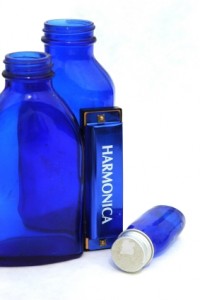 you flatten draw three each time you pass it. You could buy a minor tuned harp as a short cut (you play familiar cross harp patterns and the harp supplies the minor note adjustments for you). Experiment with further position changes. The second phrase in Scarborough Fair – Parsley, Sage, Rosemary and Thyme, 6D..7B..8D 7B..6D 7D..6B..6D – is actually the start of fourth position. On a C major harp, this gives A minor from 6D or 3D”.
you flatten draw three each time you pass it. You could buy a minor tuned harp as a short cut (you play familiar cross harp patterns and the harp supplies the minor note adjustments for you). Experiment with further position changes. The second phrase in Scarborough Fair – Parsley, Sage, Rosemary and Thyme, 6D..7B..8D 7B..6D 7D..6B..6D – is actually the start of fourth position. On a C major harp, this gives A minor from 6D or 3D”.
But coming back to third position, listen to the Pros playing it and get used to its sound. Check out William Clarke, George ‘Harmonica’ Smith, Kim Wilson and Gary Primich, Little Walter, Mark Hummel. There are many more of course, but this is a good place to start. Now introduce 3rd position into your repertoire. But, and here’s the caveat, avoid using 3rd position over everything. Don’t ruin the spirit of a song with slant harp graffiti, just because it makes you feel clever. The song is king, you are not. Ask yourself which harp and which position will help you compliment the musical canvas, and be an artist as well as an athlete.
And finally
Finally, know that whatever minor key the band’s playing in, 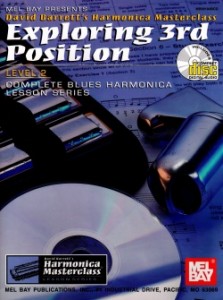 for third position you pick up the diatonic harp that’s a full tone lower. So, if they’re in E minor, you pick up your D major harp. And as a small precaution, check that draw one or draw four matches the band before you start cooking.
for third position you pick up the diatonic harp that’s a full tone lower. So, if they’re in E minor, you pick up your D major harp. And as a small precaution, check that draw one or draw four matches the band before you start cooking.
Off to the woodshed with you and get some work done. And by the way, you may want to invest in Dave Barrett’s excellent tutorial book Exploring 3rd Position (look in our Music Store for it). He covers all of this and more, including a great study piece that you will find immensely rewarding.
Next step…
If you’ve enjoyed this tutorial, please add a like, share it on social media and tell all your harp friends. You may also like to take a 1:1 lesson with Richard Taylor, who can coach you more on the fun to be had in third position. Check the Services menu for details.


D minor is, of course, the saddest of all keys. People weep instantly when they hear it, and I don’t know why.
The Thrill Is Gone and Born Under A Bad Sign work well in 3rd position.
Summertime plays nicely in 3rd position as well, start with 6D 5D 6D.
All very sound advice fellers. Thanks for your input. My favourite ever use of third position is Steve Baker’s track Double-Crossed And Blue. His phrasing, feel and blues construction are subliminal. I hope to spotlight this in part II.
I love 3rd position and use it a lot. It’s great for horn lines (draw and blow octaves up and down the harp). If the cord progression is other than the standard I V IV then I am likely to use it because it seems like it is difficult to hit a wrong note. You mentioned Little Walter’s Thunderbird and I like playing that song because it starts in 2nd position and ends in 3rd. I don’t see any other harp players doing that. Hey Wilf, can I use my voucher now?
Thanks
Tony
I’ve been grooving a lot in 3rd lately – Dave Barret’s book is a great help – that study piece in the style of George Smith is ace – especially if you’re getting into chromatic, as I currently am. Also…… Junior Wells – he was a real 3rd bird. Some of his stuff used to mistify me untill I discovered the position – check out that Hoodoo Man album on Delmark for some great 3rd position shenannigans – and his funky stuff – Broke and Hungry – good for a mix’n’match in 3rd and 2nd.
Sorry to hijack this post but I cansee any other way to ask this question on the good ship Harpsurgery.
Ive got a new ish Lee Oskar in D. I had a problem with the 6 and 7 draw. where the other holes are real easy to sound and breath through these 2 are just plain stubborn. I took reed plates out to tak e alook and saw that they where all tunes and open pretty much the same – same gap openeings – no obstructions. After a couple of frustrating days of drying to flatten the reeds and then adjusting the openings – as per the instructions in “A dummies guide to..” I only managed to make things worse. So I bit the bullet and bought a new set of reed plates from LeeOskar. They came the other day, now fitted but gusee what – same problem on the same holes – ( more pronounced on 7 draw) . The reed plate looks fine. The harp breathes easily on all the other draw holes but the 7 feels like its blocked! Help
Stuart
Thanks for your message Stuart. We’ll see if we can get you some answers.
Update. I took the top plates off and found that the holes now “worked” so I replaced the top plates but used didnt do up the end screws so tight and now the Harp works a lot better.
I just stumbled onto your wonderful site while looking for 3rd position suggestions on playing.
I play Lee Oscars andconcider myself intermediate. I have to wonder if there is some kind of magic about playing the 6,7,8 holes. I have tried a lighter air draw, sometimes it works.
Thanks for all you do…..R
“I have to wonder if there is some kind of magic about playing the 6,7,8 holes” To physically get the best sound out of them, you need to push them. They’re shorter reeds so they’ll accept some punishment. To get the best out of them musically, you’ve got to throw away your comfort zones, roll up your sleeves and get messy. It’s the border country between bottom and top end. There’s bandits and banjos in there. Jump in with them, exercise your natural punk ethic, and just do it! No prisoners.
Hi Stuart …
A while ago I posted next on Tony Eyers website/Harmonica Academy..
I answered a post about having problems with hole 2 draw.
You could try the exercises as well on holes 7-8-9-10 …!!
this is the copy of the answer:
There are 2 reasons why it all feels ” different”..
1. Most brands use shorter reeds for the higher pitched harps. In general: from G to C they use long slot reeds and from d to F short slot reeds.
So , G has long slot reeds and these require a bigger embouchure/resonance room than a D harp.
And this is reason nr 2.
It takes some time to automatically have the right embouchure on a harp. On a G harp you need to lower your jaw, to have your throat more open and relaxed than on a D.
Most players are not used to play with a big embouchure and therefore most players have a problem with with 1-2-3 draw ( esp.2).
Try this ( and I wrote this some time ago in another post):
Sit down on your couch, lean backwards till you can relax your neck/rest with your head on the edge of the couch. Pick up the harp and put the harp in your mouth without any muscle tension in your lips/face…
Blow holes 1-2-3 for a relaxed chord..no more than 50% volume…simply breath out.
Than do the same when breathing in…
After that breath in again and slowly make your embouchure smaller till you hit hole 2. When you still have a problem hitting a clear draw, breath in while imagening you make a EEEE sound. From there you can go to a AAA, to a OOOH and finally a UHHHH sound. You may notice that you when you are near the OOOH the note starts to bend.
Try this exercise on all keys/harps and work your way up and down, from G harp to F harp and back.
After a few times you will start to feel which embouchure is needed for a certain key….and after while you will do this automatically
Please feel free to ask any question you have..if possible I’ll be glad to answer them.
This offer goes to anyone who’s reading this!!
………………………………………………………….
Ben Bouman
For skype lessons: search for: beta-harps or Ben Bouman
Hello wilf,
About my question concerning 3rd position a week ago
After your reply I have been rollin up my sleeves and gittin dirty with no prisoners.
I’ll go to a jam tonight and play with my friends on “Death Don’t have no mercy” in Em
and “Walkin Boss” in Dm. I will pull it off. Thanks for keeping me determined. The 8 hole is not yet perfect but cummin….Russell
Thanks Ben. Great to hear from you and this is great advice. It’s been a while since we saw you and the Melotones at Biscuit & Blues in San Francisco! We still have your card on the fridge! Keep in touch.
The Good Doctor
Hello,
Regarding bending a note…
Can the three hole draw on a C diatonic be bent from B toBflat?
Regards, Russell
Pingback: Harp Surgery » Au Clair De La Douzième Position (Shedding Light On 12th Position)
Russell,
To answer your question about 3 draw: The general rule of bending on a diatonic harmonica, as I understand it, is that you can only bend to notes that are between the blow and the draw. In the case of your question, this would mean that between the 3 draw on a C diatonic being B, and 3 blow being G, that all 3 notes in between the two are accessible (Bb, A, Ab). The same is true with 2 draw being G and 2 blow being E, which means both F# and F are accessible because they are between the blow and draw. This gets tricky in the upper register because the notes flip, so after 7 blow you can only bend on blow notes, instead of 1 – 6 being draw bends. I really hope this helps!
Speaking of minor harp Positions I have been using one that I find quite comfortable and yet I have no idea what it’s called or what numbered Position it is. It starts and ends on the 2B… that gives you E Minor on a C harp. Try Scarborough Fair… 2B 2B 3D 3D 2D’ 2D 2D’ 2B….
Or try Summertime… 3D 2D 3D 3D” 2D 3D” 3D’ 3D 2D 2B…. The added bonus in Summertime is that you get the opportunity to practice your throat vibrato on the long two-draw-bend half way through the tune.
Does anybody know what this Position is called?
Hi Christopher. Thanks for visiting the Surgery. You’ve been experimenting with 5th Position, or Phrygian mode. Good for playing Knights in White Satin from 5B. You can certainly play Scarborough Fair, although you need to be very accurate with your bends. A great work out though. Why not tab the whole melody out for us?
For Summertime however, you’d need to jump up an octave to 3D at the end of the first phrase to find the missing B. You fall off the bottom end of the harp otherwise, trying to find a low note that isn’t there. You could start the whole thing in 5th an octave higher of course, beginning 7D 6B 7D, but you’ll need a 5 overblow to complete the job. Another great workout, and a way to break out of comfort zones. I think I may be a bit too set in my ways!
Hullo Wilf. Phrygian, eh? Well, if I were a Phrygian, this is how I’d play Scarborough Fair…
SCARBOROUGH FAIR
2B.. 2B 3D.. 3D 2D’ 2D 2D’ 2B…
3D.. 4D 5B.. 4D 3D 4D’ 3D” 3D…
3D 5B.. 5B 4D.. 3D 3D 3D” 2D 2D”… 1D…
1D 2B.. 3D 3D”.. 2D 2D” 2B 1D 2B…
I’ll do Summertime in a separate post. Cheers.
Correction… In Scarborough Fair wherever I have written 2D” should be 2D’. Wilf, should I re-post it with corrections? Can do if you wish. Cheers.
Here’s the correct version of SCARBOROUGH FAIR… in Phrygian…
SCARBOROUGH FAIR
2B.. 2B 3D.. 3D 2D’ 2D 2D’ 2B…
3D.. 4D 5B.. 4D 3D 4D’ 3D” 3D…
3D 5B.. 5B 4D.. 3D 3D 3D” 2D 2D’… 1D…
1D 2B.. 3D 3D”.. 2D 2D’ 2B 1D 2B…
Wilf. As for Summertime I apparently know a different version… maybe I should call it Some Other Time. Anyway, here’s my version, in 5th Position…
SOME OTHER TIME
3D 2D 3D.. 3D” 2D 3D” 3D’ 3D 2D… 2B…
3D 2D 3D” 3D” 3D”… 2D 2D.. 2D 2D’…
3D 2D 3D.. 3D” 2D 3D” 3D’ 3D… 2D 2B…
1D 2B 1D 2B 2D.. 3D” 3D’ 3D.. 3D.. 3D”.. 2D.. 2B
The extended 2D’ at the end of line 2 is where one could use some throat vibrato.
Cheers.
SCARBOROUGH FAIR
As I see it, it’s the other way around. In the first line where you’ve written 2D’, this should be 2D”. The 2D should also be 2D’. In the third line 2D’ should be 2D”. Might be worth tabbing this out for good measure?
It’s like my little granddaughter told me when I was, as usual, diddling around in A minor on my guitar. “Grandpa, quit playing that sad music”
No doubt her tastes will change as she grows up. Keep reminding her meantime.
I like to play Summertime in 4th position. Like a C harp in Am. Melody starts on 8 hole blow little bend down to 7 blow back to 8 blow and you’re off. Nicer on a G harp in Em. A little mellower up there on a G.
This all makes a lot of sense, and I’m excited about experimenting with 3rd position. Here’s my question: i don’t quite understand what you mean when you say this position sounds “really wrong” in some situations. Why isn’t it generally useful for conventional 12-bar blues? Let’s say you’re playing in the key of E, so you’ve got your D harp ready to go. It seems to me that the beauty of 3rd is that it gives you easy access to the blues scale for both the I and IV chords (in stark contrast to 2nd, which steers you toward playing unbendable blow notes in a major scale, rather than the blues scale, when you go to the IV chord):
I chord — 8D, 7B, 6D, 6D with half-tone bend, 6B, 5D, 4D
IV chord — 6B, 5D, 4D, 4D with half-tone bend, 4B, 3D with half-tone bend, 2D
And then your one bar on the V chord is easy: Just do a quick little lick involving 6D, 6B, and 4D
So my question is: Where’s the limitation here? Thanks.
The point you make is valid on a micro level (and there are further options over the V chord in third position working from 7D), but we need to consider the bigger picture. The limitation you ask about lies in the song itself, not the position you adopt. Songs have a musical DNA. If you use the appropriate tonal vocabulary to match that DNA and the song’s chord changes, what you play will sound good. But just as playing second position over everything doesn’t always work, the same goes for third position. You’re at risk of using the wrong musical dialect. Stick with third position over everything and on certain songs you will sound awful – or plain wrong. I’ve been there and I’ve heard others go there. In short, each position has an intrinsic ‘character’ that lends itself to types of blues and other musical genres. The response from fellow band members and your audience is a good indication of whether or not what you’re playing is palatable.
Thanks so much for all this information. I’m getting more and more into this wonderful position. Question (I quote) : “Learn to recognise …… Blow hole five has a real blue note feel. Draw bend six is the bluesiest of notes.”
Isn’t it the Draw hole five that has that blue note feel? It is, if I’m not wrong, the flat third of the scale and Blow five the second.
Cheers
Hi Ellen, thanks for dropping by! You are absolutely right. 5 draw is the flat third when playing blues in third position. For 5 blow I wrote blue note in italics. I was referring to this form of jazz rather than a tone from the blues scale. I’ve now changed it to Bebop for greater clarity! Drop by again soon and thanks for your kind comments. Top tooting to you!
Please keep me informed. I got so much knowledge out of everyone.thanks